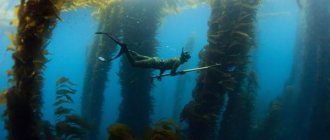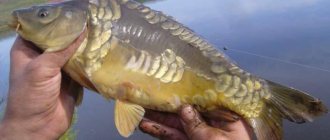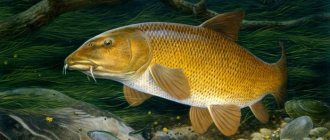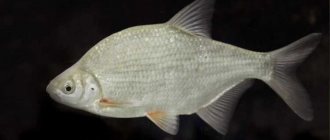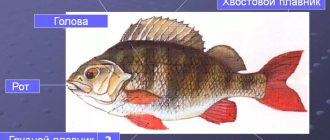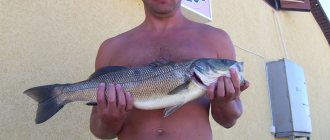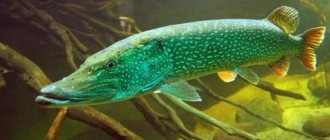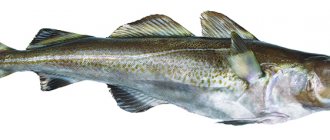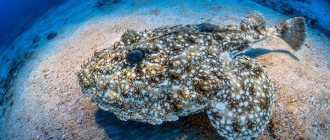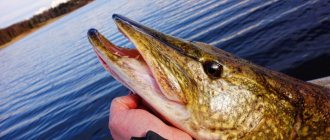The Baltic Sea belongs to the Atlantic Ocean basin, is located in Northern Europe and has a surface area of 415 km2. Many rivers flow into it, so it has a medium salinity, it is one of the largest seas in the world with this feature. There are no big storms in the Baltic, the maximum wave height rarely reaches more than 4 meters, so it is considered calm in comparison with other seas. The water temperature is quite cold, no more than 17-19 degrees Celsius, but this still does not stop local residents from swimming in the summer.
Inhabitants
The Baltic Sea is rich in seafood. They are mined in the Kaliningrad region and European countries. The water here is not as salty as in other seas. Therefore, some scientists conditionally divide the inhabitants of the Baltic Sea into freshwater and marine. The bays are mainly inhabited by freshwater fish. The sea one is located far from the shore. In the Baltic there is:
- Salaka. This is a small fish of the herring family, rarely growing more than 25 cm. It is the main commercial fish of the Baltic Sea, approximately half of the total catch comes from it. Herring is smoked, fried and canned.
- Baltic sprat. A very common fish in Europe, one of the well-known names is “European sprat”. Sprat is smaller than herring, an adult grows no more than 15 cm. This fish is versatile in preparation, like herring, but most often it is used to make canned food.
- Cod. This is a sea fish of the cod family, the meat is rich in protein and minerals, it is a good source of B vitamins. Cod meat also contains a lot of niacin, which is useful for liver diseases. It grows up to 1 meter long, the largest individuals can reach a size of up to 2 meters, but this happens very rarely. Cod is loved in many countries around the world; there are a huge number of recipes for preparing dishes from it; a special delicacy is cod liver preserved in oil. Cod is one of the most delicious marine inhabitants of the Baltic Sea.
- Flounder. This is a sea bottom fish with a bizarre flat shape. Its most memorable feature is its flat body and eyes located on one side, so it is impossible to confuse the flounder with another fish. The scales of this fish are rough like sandpaper. On average, flounder lives 5 years and grows up to 40 cm in length. It has white, tasty, tender meat, although when cooked it gives off a specific smell that not everyone may like. To get rid of discomfort during cooking, you need to remove the skin from the fish. Flounder meat contains proteins and beneficial amino acids that are well absorbed by the body. Flounder is considered a dietary fish.
- Acne. This amazing inhabitant of the Baltic Sea is included in the list for a reason. It is found in all reservoirs of the Kaliningrad region. You can catch eels not only in sea water, but also in freshwater rivers. Externally, the eel looks like a snake, has a long body and swims, wriggling like snakes. An adult grows up to 1.5 m in length and weighs about 2 kg. Eel meat contains proteins, fats and carbohydrates, and is also a source of omega-3. The most common method of preparing eel is smoking.
- Perch. A very bony and tenacious fish, it can live up to 15 years. Meat can be stored for a long time and contains many vitamins and nutrients.
Tragedy in the Baltic Sea: four fishermen were killed by a meter-long wave?
Last Saturday morning, four fishermen on the boat “Marin-530” went out to sea for cod near the village of Filino, Zelenograd region. At about 1 p.m., contact with them was lost—the men’s wives could not reach them. By nine in the evening, relatives sounded the alarm.
The search operations were led by the Marine Rescue Coordination Unit. He manages all rescue operations that take place at sea. Rescuers immediately notified all ships that were at sea at that moment. There was a chance that someone would see something overboard.
However, they decided to start the search itself the very next day. They did not send rescuers into the rough night sea. On Sunday morning, all forces were gathered: 18 pieces of equipment, including two helicopters, six boats, 68 personnel.
At 10 a.m., a helicopter discovered the overturned boat and later the bodies of all four fishermen.
The fishermen arrived in Filino in an Audi with a trailer; the car was later found on the shore. As we learned, one of the dead was the assistant to the Kaliningrad transport prosecutor, 27-year-old Alexander Dubchak. With him were his father, 57-year-old Vitaly Dubchak, as well as Sergei Gordienko (51 years old) and 30-year-old Denis Murakhovsky. An employee of the Svetlogorsk Interdistrict Investigation Department worked at the scene of the tragedy. The preliminary cause of death of the fishermen is hypothermia; it is not yet known why the boat capsized.
“A pre-investigation check is underway,” the regional Investigation Department added. “In the future, its materials will be transferred to the North-Western Investigation Department for Transport of the Investigative Committee of the Russian Federation to resolve the issue of initiating a criminal case.
Why did they turn over?
What caused the tragedy? Investigators will make the final conclusions, but according to one version, the ship capsized due to waves.
— The weather on Saturday was not bad. Temperature + 7 + 11 degrees, southwest wind 4-8 meters per second - it would seem not much, says Sergei Tuganov, deputy chief state inspector for small vessels of the Kaliningrad region. — The sea state was about one point, but in reality the wave height reached up to a meter. This is even worse than a wind wave, which is not a hindrance for the ship. But a meter long big wave is already an obstacle.
There is an assumption that the fishermen accelerated the boat and “stuck” into such a meter-long wave. The vessel at the back has two plastic seats and a bench on which all four could sit at that moment. If events developed this way, then the men were simply thrown overboard. And the boat rushed on without them.
On such boats, jet skis and other watercraft there is a simple mechanism for emergency engine stop. A cord is put on the hand, which leads to the dashboard, and if a person falls overboard, the engine stalls. But, according to rescuers, none of the fishermen had a cord on their hand. There was a key stuck in the boat's ignition switch. Most likely, the uncontrollable ship capsized, running into another wave.
If the fishermen had capsized along with the boat, someone would have fallen under the vessel, there would have been injuries and damage. The engine propellers continued to work. However, all the bodies were undamaged. And the boat was intact, like new.
— Water temperature + 10 degrees. At this temperature, even a very healthy person can withstand no more than 25-30 minutes, say rescuers from the Ministry of Emergency Situations.
Gone to the depths
Specialists have already checked the documentation for the boat. All papers were in order.
“The boat was officially registered, the owner had a license to drive it,” says Sergei Tuganov. – Five people is the permissible number of people on board. In this case, there were four people on the boat.
But an important point is behavior on the boat. People and things should not be on the same board to avoid overweight. Otherwise, the wave will capsize the boat.
All Kaliningrad sea fishermen know these rules. We talked to one of the fishermen who specializes in cod fishing in the Baltic.
“Now 99 percent of fishermen follow the rules, everyone takes safety measures seriously. There are flares on board, fishermen in life jackets, says fisherman Vitaly Ivanov. - You definitely need to be sober. It is advisable to go to sea in two companies. On two boats. What if the engine stalls or someone gets sick? But you never know what can happen at sea! A second boat with friends on board wouldn't hurt. You also need to remember about your mobile phone. For example, I bought myself a special model of a mobile phone that does not get wet. You feel more confident with him. After all, if you put a regular phone in a bag, there is no guarantee that it will not get wet in it.
Valuable fish
- Salmon. This is a fish from the salmon family; Atlantic salmon, which is sometimes called “Baltic”, is found in the lightly salted waters of the Baltic. This type of “noble” sea fish is popularly known as “salmon”; it is quite large; an adult male can reach a length of more than 1.5 m. The taste of salmon meat is tender and buttery, the color varies from light pink to red. Salmon fillet contains virtually no bones, so it is popular among those who do not like fish for fear of swallowing a small bone. Many dishes are prepared from this fish, including the well-known red salmon caviar, which appears on our tables on special occasions.
- Smelt. Surprisingly, the well-known smelt belongs to the salmon family. It is generally accepted that this fish is not valuable, despite the fact that it is caught in large quantities in the Baltic Sea. Smelt meat is rich in iron and fluorine; doctors recommend that older people include it in their diet.
- Vendace. This small fish is also from the salmon family; its peculiarity is that it lives exclusively in the waters of the Baltic Sea. Vendace is a noble fish and is therefore considered a valuable raw material. She is loved in Europe and Scandinavian countries. In many regions of Russia, vendace is protected and you cannot just catch it.
- Whitefish. Fish of the salmon family is considered a valuable commercial fish and has more than 40 species. Despite the fact that whitefish belongs to the salmon family, its meat is white and very fatty. Because of this feature, whitefish meat is not stored for long, so it is consumed or salted immediately after catching.
Winter fishing in the Baltic
Almost simultaneously with the first frosts, ice fishing enthusiasts begin to actively gather on reservoirs. They say that the first ice is a particularly good time for fishing...
I want to immediately warn you that neither I nor my fishing partners are fans of winter cold and drilling holes. That’s why, when ice blocks water bodies in our latitudes, we prefer to move to where we can continue fishing in open water. Moreover, winter is considered the most successful time for trophy fishing.
BALTIC SEA
Total area:
415,000 km²
Coast length:
8 thousand km
The weakest sea in the world
- an average of 7 ppmThe Baltic Sea extends deep into the land of Europe, washing the shores of Russia, Estonia, Latvia, Lithuania, Poland, Germany, Denmark, Sweden and Finland
It all started with a seemingly unremarkable trip to one of the lakes in the Leningrad region, which, for a number of reasons, was nevertheless etched in my memory. On the one hand, we were going to the lake just three days before the New Year, there was even an idea to take New Year’s caps with us, but there was no time left to look for them. At the same time, the trip became a test of the capabilities of my new Volvo XC90. Moreover, the 150 km long Pskov highway, along which we had to travel, was very suitable for such testing. There are high-speed sections and places with reverse traffic, constant repairs and disgusting road surfaces. And finally, the access to the lake itself is not very good. I won't go into details about this trip. In general, everything went in an extremely normal and comfortable manner. But the fishing itself was remembered for an unexpected prize in the form of an eight-kilogram pike (until that moment, the lake record was considered a “toothy” pike weighing just under 3 kg). Moreover, she was not the only one caught that day. At the same time, when we dipped our baits into a lake in the south of the Leningrad region, in the north of this region the thermometer failed to rise above -8°C, which is why the lakes were rapidly covered with ice. This means that the summer fishing season here will come to an end very soon. In general, unexpectedly successful fishing and the news of the approaching cold weather prompted us to think seriously about our immediate plans. And since we had a Swedish car, the idea arose of itself to go to the west of Sweden, where the Baltic salmon trolling season begins at this time. The route, in general, has been studied for a long time, which means agreeing on the nuances is a matter of technology.
Marina Simrishamn. Even during severe storms, boats remain safe
Arriving home, I performed the already well-known operations. I ordered ferry tickets for the required dates, contacted a couple of familiar guides and agreed on a visit. You could take your own boat and equipment, but there was no particular need for this; besides, transporting a boat over long distances not only carries certain risks, but also significantly increases the travel budget. The holidays flew by in the traditional bustle. During this time, most of the lakes and rivers were tightly closed with ice, and ice fishing enthusiasts in crowds of thousands poured out onto the fragile ice in search of fishing luck.
LONG WAY TO THE SEA
Unlike day trips around the region, long trips do not need to take a boat, a motor and some gear. It would seem that trunk volume should no longer be of particular importance, but in fact this is not the case. Fishing at sea is unpredictable. For example, a strong wind may blow and you will have to sit on the shore for a long time. But there is always an alternative to go to a river or to the shore of some sheltered bay. Consequently, in addition to the traditional equipment and several sets of clothing, three more sets of gear are added. As a result, the quite capacious trunk is filled to capacity. The 200 km journey from St. Petersburg to the border town of Torfyanovka passed quickly. The ferry to the Swedish capital Stockholm departs from the terminal in Helsinki at 17:10 local time. We left at 12:20. At this time there are not many cars on the highway, and we covered the distance to the intermediate point in less than two hours. In this part of the world you can still afford to slightly exceed the speed limit. Moreover, the car is capable of doing this. Shortly before the border there is a traditional stop. First, you need to get car insurance—a “green card.” Secondly, refuel “to full” and take a couple of cans with you. According to the rules, you can only import 10 liters of fuel, but we took two 20 liters each. This is a certain risk, but you will not be deprived of your visa and will definitely not be turned back. In extreme cases, you will have to leave the canisters at the border. In general, the story of fuel for travelers in Europe is a sore subject. The cost of gasoline here is about 1 euro per liter. Maybe for Europeans with their high salaries and short distances this is acceptable, but for us 67 rubles per liter is clearly too much. We're lucky: the engine that powers the XC90 D4 runs on heavy fuel and consumes only 6.5–7 l/100 km on the highway. And taking into account the load and three adult passengers (including the driver), the consumption was something like 7.2 l/100 km. This allows you to save a lot.
Thanks to this pike, we got ready for a long journey.
Russian border guards showed no interest in our company. The employee, without any emotions or unnecessary questions, stamped the passports, and the customs service representative gave us only a cursory inspection of the cabin and trunk and made sure that all crew members had border crossing stamps.
We ignored duty-free in the cross-border area because we had the opportunity to make purchases in the duty-free zone directly on the ferry. On the Finnish part of the border, as always, there is calm and serenity. Every time I cross the border, I ask myself the same question: how do they manage to do everything so relaxed and without any rush, but at the same time there are almost never queues at the Finnish border? Routine questions about the place and purpose of the visit, the number of passengers in the car and items prohibited for import - and a blond guy in glasses puts stamps indicating the fact of crossing the border. The inspection was a little more attentive, but without any quibbles. Perhaps the episode with that same fuel deserves special attention. An employee of the Finnish customs terminal Vaalimaa first asked where we were going, having received a completely honest answer - fishing, he asked a couple more clarifying questions. It seems out of simple curiosity. Looking into the trunk, among the pile of things, gear and equipment for filming, he, of course, noticed two cans. It was stupid to claim that they were empty or that they only contained 10 liters allowed for import. Therefore, I honestly said that there was fuel there, but did not specify its volume. The employee was satisfied with the answer and wished us a safe journey. It's worth clarifying something here. No matter how simple they may seem at first glance, every employee at the Finnish border undergoes serious training and understands perfectly well when they are being lied to. At the same time, many Finns themselves go to Russia to refuel their cars, and therefore there is nothing special in the fact that we took a small supply of fuel on our trip to Scandinavia. The most important thing here is to tell the truth. I note that this approach does not apply to cigarettes and alcohol, but our entire team belonged to the category of non-smokers.
The boat that took us to the fishing grounds had Volvo Penta diesel engines.
And there is still 200 km ahead to the terminal in Helsinki. And here it is best to use the cruise control functions - set the permitted speed and move along the highway in the right direction. The main thing is to follow the signs “Settled area” and the requirements to reduce speed. The fines here are many times higher, and sanctions for a large number of violations can be much more stringent. Another couple of hours and we were there... And then an unpleasant surprise awaited us. I completely forgot about the time difference and, when calculating the time to my destination, did not take into account the “minus hour”. As a result, instead of an hour, we had fifteen minutes left at the entrance to the terminal. Fortunately, there were no traffic jams, and we safely completed the registration procedure, and after 20 minutes we were already sitting in the cabin of the Gabriella ferry of the famous Viking Line company. I must say that I am not a big fan of these ferry crossings and can hardly stand the 14 hours during which the ferry travels the distance between the two Scandinavian capitals. Of course, this same journey can be covered by plane in just an hour and a half, but we still had quite a long way to go from the capital of Sweden, and a car makes it possible to travel comfortably, having all the necessary things at our disposal. You have to sacrifice time.
In the morning we moored in the capital of the Kingdom of Sweden. Traditional breathalyzer testing of drivers, and we are already on the main street of Stockholm. For a moment it seemed that the car, having inhaled the air of its homeland, somehow perked up, probably wanting to take a short excursion to memorable places, but there was no time for that. We had to cover a distance of 620 km along one of the roads leading south, towards the town of Simrishamn, the end point of our route. The road network in Sweden is no worse developed than in neighboring Finland, and in general the traffic is quite comfortable, but certain speed limits must be observed. However, after an hour you get used to this pace of driving (the convenient cruise control helped again). A full tank was enough for about 630 km, not counting the 200 that we drove through Finland. I would like to say a special thank you to the staff Swedish navigator, who guided us around his native land quickly and accurately, allowing us to avoid additional errors, because the maps downloaded to smartphones refused to work correctly. We reached the place in the late evening, but without gas stations and with a reserve of fuel. And only at the entrance to Osby the canisters were used. We arrived at the parking lot of the Bengtssons Loge fishing hotel right in the middle of some local party...
The route passes through the Åland archipelago, which has 6,500 islands and is famous for its good fishing
TWO WORDS ABOUT SIMRISHAMN
Among fishermen, this very small ancient town with a population of some six thousand people is quite popular (in Russia a little less, but in Europe, especially in the Baltic countries, extremely). There are several reasons for this. The first is that the powerful shelf of the Baltic Sea is located next to it. One could say “slump”, but its scale is measured not in tens, but rather in hundreds of meters. Naturally, this circumstance has a beneficial effect on the local ichthyofauna. In particular, it is here that salmon feed from most rivers flowing into the Baltic Sea, the Gulf of Bothnia and the Gulf of Finland, as evidenced by the numerous returns of special tags that scientists place in different places. On the other hand, Simrishamn is actually the only place in this part of the Baltic where there is a convenient closed bay in which you can hide from bad weather. Thanks to this circumstance, the city is known to most yachtsmen. Simrishamn itself does not represent any special historical value, although if you delve into its centuries-old history, you can certainly find some interesting facts. Today it is a completely calm resort town with a characteristic flavor, many restaurants and hotels, traditional architecture and cobbled streets. In winter, you can meet not only local residents here, but also numerous fishermen who come to try their luck in catching Baltic salmon.
THE WEATHER CAN BE TREACIOUS
On the very first day we had to quickly change plans. While we were covering the distance from St. Petersburg to Simrishamn, a small cyclone that was driving waves in northern Norway became noticeably stronger. Deciding that he was already strong enough to travel, he moved exactly to these places. In order not to waste the day, we went towards the town of Ystad, where, in the company of a new acquaintance, Patrick, we tried to find sea trout. Several large bays made it possible to do this, sheltered from high waves. Patrick is a fan of this type of fishing; he knows all the entrances and places convenient for fishing very well. Tellingly, he also drives a Volvo, albeit on a well-worn XC70, which he calls nothing less than a “Swedish tractor.” The weather greatly disturbed the surrounding waters, and all our efforts were unsuccessful. But this area, called Skåne, is considered one of the best places in the Baltic for trout fishing. Well, fishing is fishing.
BIG TROLLING
The next day still allowed us to go to sea. To that very shelf from the Simrishamn marina is about 80 km along the open sea. It’s symbolic, but the boat that rushed us to the fishing grounds, breaking two-meter waves, also had Volvo Penta diesel engines (230 hp twin). Having reached the fishing spot, we began to quickly unravel the gear. There were two or three more crews within sight. The strong monotonous rocking made itself felt, and my colleagues quickly began to lose the will to win. A wave of one to one and a half meters has a serious impact on a person. For an unprepared body, being in such a situation is a serious test. Fortunately, I had already fished in such conditions, and when the treasured crack of the clutch sounded, signaling a fish at the other end of the line, I was the first to grab the rod. Here it is - the first salmon. Powerful jerks, stretches, throws to the side. It is not very large, but its 5-6 kg cannot be compared with any pike, even a larger one. We managed to find a fish feeding area. Several times there were so-called “double strikes”, that is, double bites. And one day four fish were hooked at once. True, two of them got off while we were dealing with the first ones, but the fact itself clearly indicated that we had not come this long way in vain. Fish weighing more than 10 kg (and in our catch there were a couple of 12 each) simply resist furiously, only with the first jerk reeling in up to 100 m of fishing line. Fortunately, its supply is sufficient and allows you to fearlessly release the trophy at such a distance. The total time of fishing lasts more than an hour, and then the feeling is like after the gym. What can we say about emotions?! We were in the Baltic for two days and could only fish until 14-15 hours. Then the wind increased from 7-8 to 12-13 m/s, and this was already dangerous. However, even during this period we managed to take more than 20 fish in the boat, of which we took only two - the rest were released back.
It is known that traveling by car always allows you to go beyond the direction and general plan. Turn to the side, deviate, speed up or, on the contrary, slow down. But, alas, in our situation we were completely dependent on the ferry schedule and, according to the tickets we purchased, another ship named Amorella was waiting for us in the Stockholm terminal no later than 6:30 in the morning. Therefore, after fishing, having had a good lunch, we set off on the way back. Unfortunately, to get to the ferry, we were a little short of fuel and, before reaching the capital of Sweden, we had to fill up 20 liters at 1.44 euros per liter. They were enough to get to the border and fill the tank on our territory at a more reasonable price. According to current rules, the import of fish, like many other products, into the territory of the Russian Federation is prohibited. And they keep an eye on this, especially if they see fishermen traveling. Therefore, we cooked the two salmon we took with us in Sweden, right on the shore, and ate them there in the company of local friends. Thus ended our first “winter fishing” of the year, and in a few weeks we will again begin to collect gear for a trip for new trophies...
Dmitry Matveev, photo by the Author
Mollusks, crustaceans and jellyfish
In addition to the listed fish, the Baltic waters are inhabited by mollusks, squid, small crustaceans and bottom fish. The mitten crab, which appeared here relatively recently, is very rare. Jellyfish are also found in the Baltic Sea; the largest, the cyanea, lives near the waters of Denmark. The rest of the space is inhabited by the harmless Aurelia, an inhabitant of the Baltic Sea, whose photo is not as frightening as the one presented above.
